The State of Digital Imaging
by Wesley Fink on January 26, 2009 12:02 AM EST- Posted in
- What's New with Wes
January and February are anticipation months in the Digital Camera industry this year. Anything big is likely to wait until PMA in March to be announced. Manufacturers are consolidating product lines, reshuffling their point-and-shoot offerings, and dropping hints. With the worldwide economy in recession (or worse) things seem even slower than usual as the Digital SLR industry – which many thought was bullet-proof – is finally feeling the pinch of declining sales.
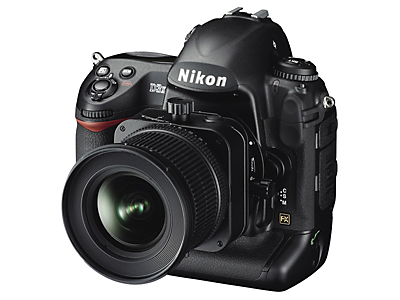
The last two big deliveries in the industry were both full-frame sensor cameras, with huge 24x36mm sensors with no crop factor at all for 35mm lenses. The Nikon D3x was shipped with a controversial $8000 price tag. It turned out to be a 24.5 megapixel Pro camera with a sensor manufactured by Sony "to Nikon specifications" with Nikon electronics and build quality. Like the Pro D3 the D3x features an integral motor and incredible ruggedness to stand up to anything a Pro might ask of the $8000 camera.
The Sony A900, with what is likely the same Sony base sensor, is selling for $2999. The Nikon D3x does have slightly lower noise at high ISOs (3200-6400) than the Sony A900, but some recent resolution tests show the Sony A900 and Nikon D3x a dead heat in resolution at lower ISOs. In the ISO range from 100 to 1600 (looking at raw data) the Sony A900 and Nikon D3x are neck and neck in noise, which just reiterates the impact of the base sensor on noise and resolution.
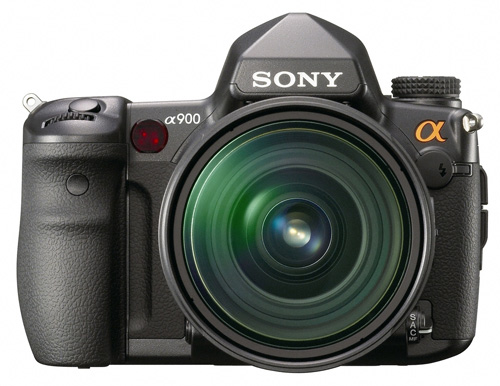
Nikon has done a great job with the D3X, but some wonder if the Nikon image processing and Pro build is worth the extra $5000? Even if we forget an A900 comparison the D3x is about twice the current $4200 price of the Nikon Pro D3, which is in almost every way but the sensor the same camera as the D3x. The D3 has a 12 MP sensor but goes to ISO 25600 instead of ISO 6400 and reaches 9 FPS instead of the 5FPS of the D3x. Nikon prefers to compare the D3x to Medium Format cameras with digital backs. In that arena the $8000 D3x looks like a tremendous bargain compared to the $20,000 to $30,000 Medium Format digital backs.
It took Sony a while to get into the D300 quality arena with their A700, which both use a sensor manufactured by Sony. Sony eventually reached their goal of comparable JPEG images with V4 firmware. We are left to wonder if a similar firmware update is coming for the A900 that will improve the less than spectacular JPEG engine. Performance is remarkably close to the D3x shooting RAW, but the Sony JPEG engine is certainly not the equal of Nikon's JPEG. With pricier full-frame models many may rightly wonder if in-camera JPEGs really matter since the cameras are more likely to be used in RAW mode than cheaper and less capable DSLRs.
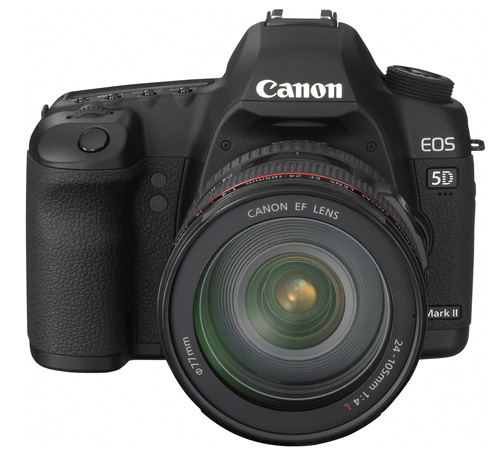
At the other end of the full-frame spectrum from the $8000 D3x the Canon 5D Mark II finally arrived after a 3-year wait. The new 5D2 instantly obsoleted Canon's own $8000 1Ds Mark III. Canon themselves proclaimed the 21.1 megapixel sensor in the 5D2 to be their best sensor, so it should be obvious that a 1Ds Mark IV should be arriving at PMA or soon thereafter.
It is interesting that Pixel-Peepers immediately found a “fatal” flaw in the 5D2, with black dots appearing to the right of blown highlights like Christmas lights and street lights in certain low light conditions. The Forums made a huge deal of it, ignoring all the incredible value Canon was delivering with the $2699 5D2. Canon recently released firmware that fixes the issue, and if you are a 5D2 owner you should definitely upgrade to the new firmware. Frankly we found you had to work really hard to set up a shot that would reveal the mysterious black spots on the right, but with the new firmware there is no reason to continue worrying.
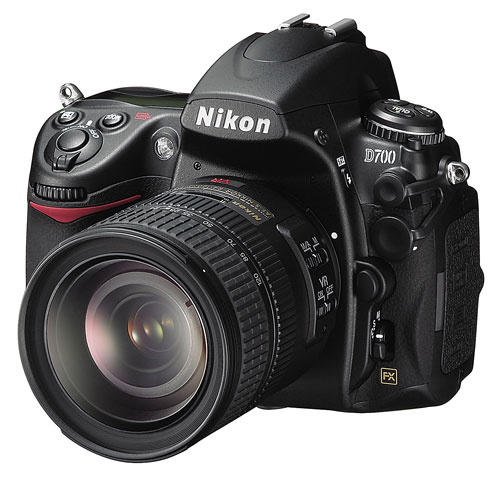
It should be clear to everyone by this point that the Pro DSLR is now full-frame. Even the top of the prosumer line is filled with full-frames, with the Sony A900, Canon 5D Mark II, and Nikon D700 all available for under $3000. Those prices will continue to drop and the next big full-frame is likely to come from Sony in a cheaper full-frame that may possibly be called the A800. With the Nikon 12 megapixel full-frame sensor looking low-res beside 21 to 25mp sensors the D700 price is dropping, and we would not be surprised to see a new lower priced Nikon full-frame coming in the near future as well.

One of the big events of recent months is finally getting recognition from the “important” photo sites. When we lauded the Panasonic G1 as the most interesting and desirable “entry” camera in our Holiday Digital Camera Buyers Guide, some criticized the selection as short-sighted. Since then Popular Photography has named the Panasonic G1 their "Camera of the Year" and dpreview has finally published a glowing review of the new G1.
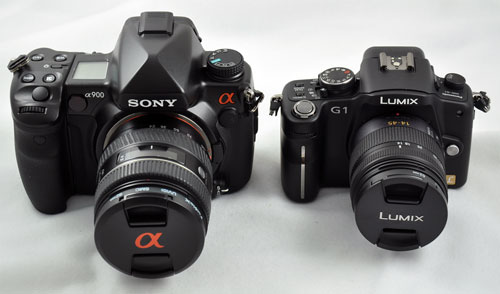
It appears some early critics of the G1 missed the point that the G1 was genuinely unique in the Digital Photography world – a world in which true innovation is very rare. The G1 is not as small as many would like, but the lenses for the camera are truly small. The whole micro 4/3 system also promises truly tiny interchangeable lens cameras with big sensors – which many have been clamoring for. Promise is the reason the G1 is exciting – more so than what it actually is. There is certainly nothing wrong with the product, as the G1 is a great camera, but just consider what is likely to come.
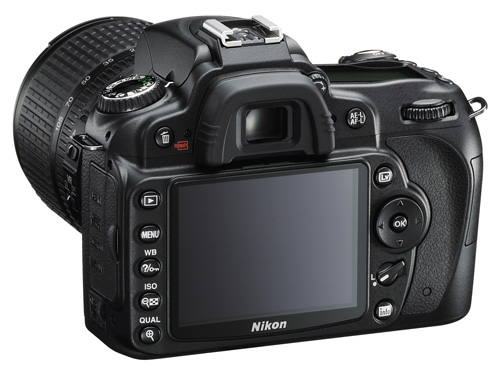
Perhaps the biggest promise of the Panasonic G1 is video. Nikon whet the appetite with their crude implementation of HD with no auto focusing capabilities with the D90. Canon took it further with true 1080p HD capabilities with slow focusing limiting the utility. Still the 5D Mark II is capable of stunning video with careful planning.
Panasonic tells us Micro 4/3 was developed with video in mind, and the super fast multi-point contrast detection sensor in the G1 will be an exciting base for a truly capable full HD interchangeable lens big sensor still camera with no-compromise full HD movie capabilities. The biggest question right now is not if we will see a micro 4/3 that does video, but rather when that camera will arrive. Is PMA too soon?
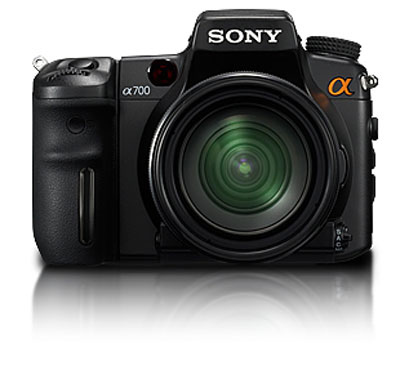
With Canon, Nikon, and soon Panasonic/Olympus in interchangeable lens HD video as a still camera option, the market is left to wonder where Sony might be. As a huge player in video and now number 3 in the DSLR market, most assumed Sony would be the first with video capabilities in this market. That hasn’t happened, but if I were a betting man I would bet Sony will have some video surprises at PMA. Everyone expects an A700 replacement to be announced this March, and it might just be the missing video link.
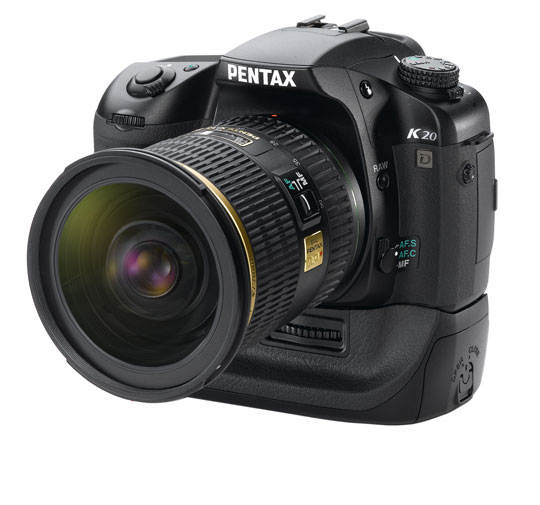
Then there is the question of Pentax. The 14.6 megapixel K20D is one of the most capable DSLR cameras we have tested in the past year, and yet it gets consistently ignored on many photography review sites. Today, with a list price dropped to $999 and a street selling price of about $750 for the K20D body the camera is truly an incredible value. This is particularly true when you consider the environmental sealing lavished on the K20D – which is largely missing on others in its class.
The K20D solidified the marriage of Pentax and Samsung with the innovative Samsung 14.6 MP CMOS sensor. Will Pentax finally upgrade their very accurate but slow 11-point AF module? Will we finally see a Pentax that can do more than 3 FPS? Will Pentax survive this economic crisis? If Pentax does survive, we know that Samsung, along with Sony, is a patent holder on the process used to produce full-frame CMOS sensors such as the Sony 24.6 megapixel sensor. Knowing that we have to wonder if Samsung will also choose to play in the full-frame arena.










40 Comments
View All Comments
drwho9437 - Tuesday, January 27, 2009 - link
Don't do it at all. Suggestions that the pro market is all full frame based on resolution or price are wacko.Seriously learn something real about cameras, interchangeable lens cameras are about the lens systems not the bodes.
Smaller sensor have advantages and disadvantages compared to larger sensors. Obvious advantages in many cases are lighter telephoto lenses, and increased effective DOF at the same FOV.
There probably will not be much at PMA this year because of Photokina + holiday season wish to get cameras to market. You'll see some P+S. Olympus/Panny are the most likely to have new stuff in the u4/3 area.
Wesley Fink - Tuesday, January 27, 2009 - link
Yes it is all about glass. It so happens that Canon, Nikon, and Sony - the three brands with the largest catalogs of lenses - are also the three brands with full-frame cameras. Nikon and Canon, the two biggest brands, both have multiple full-frame cameras. I thought the first tenet - it is all about lenses - was pretty obvious and did not need to be repeated.alexwgreen - Thursday, January 29, 2009 - link
Agree again. It is all about the glass.Surely though, it should be about the quality of the lenses, and not the size of the catalog, particularly when the majority are relics from film days.
Although some view it as limited, I would say 4/3 still has the best lens lineup, in terms of quality, fit for purpose glass.
But that's just my two cents
Hrel - Monday, January 26, 2009 - link
Many thought the DSLR market was recession proof?! They're $1000 plus cameras that only people who make a living taking pictures and camera enthusiasts with money to spare care about. Not to mention the types of pictures most consumers take, don't benefit in a noticeable way from spending that much on a camera. $8000 for a camera?! Are you fricking kidding me; rather buy a car. Or go on a couple kick ass vacations, or build an amazing computer and a projector and surround sound, and an all in one logitech remote and... well, you get the idea.strikeback03 - Tuesday, January 27, 2009 - link
Well, the dSLR market starts well below $1000, in some cases below $500. I'm not sure why he would call it recession-proof (I'd think basic food groups are about the only thing recession-proof) but most of the action happens well below the $8000 bodies.OTOH, have you seen the prices top photographers can charge? A few grand for some baby pictures? Over $10k for a wedding? There are enough pros making enough money at this to support these and more (a top medium-format back runs close to $50k IIRC, and then you add a body and lenses). And fortunately for the rest of the market, a lot of the technology eventually filters its way down to the mainstream.
Some of those all-in-one Logitech remotes run around $500 IIRC, which to me is more insane than a $8000 camera. Unlikely to make money with a remote.
punko - Monday, January 26, 2009 - link
Ah, you miss the point. These cameras have always been a niche product. In as much as the people who buy these cameras themselves are essentially recession proof.The common man has never been the target market for these cameras.
zagortenay - Monday, January 26, 2009 - link
Panasonic G1 is really small and light weight. No need to discuss it anymore. If you compare it with Nikon D90, both including kit lenses, D90 feels like a brick. What can I say more?Panasonic could make it even smaller, but then people would say; "it feels too small, not enough grip, it is not balanced enough" etc. I am sure we will see less conservative designs by Panasonic in future, which look like rangefinder cameras and they will be indeed smaller. For the time being Panasonic did not want to take bigger risk, which is a good decision imo.
This is the way to go for future and sooner or later you will see smaller non-dslr cameras and dslr will eventually disappear, because dslr mechanism does not have any technical advantages by itself.
strikeback03 - Tuesday, January 27, 2009 - link
Other than an optical viewfinder that is usable in low light? These cameras like the G1 may take over for the cheap dSLRs, but I don't expect it to threaten the dSLR with extinction. Still plenty of market where the OVF is needed.roymbrown - Monday, January 26, 2009 - link
At this point, I don't think it is the best option for most people. Functionally, it offers little over traditional SLRs, it isn't THAT small, and the lens selection is currently limited compared to the class leaders.I agree that what the G1 really offers is "promise". Right now, it proves that a non-SLR camera can perform on par with an SLR. The fast contrast-based focus and sharp, bright EVF are true innovations. Combine these with 1080p video, which I hear is coming soon, and things get really interesting.
teko - Monday, January 26, 2009 - link
Broken link on: Popular Photography has named the Panasonic G1 their "Camera of the Year". (contains double http)